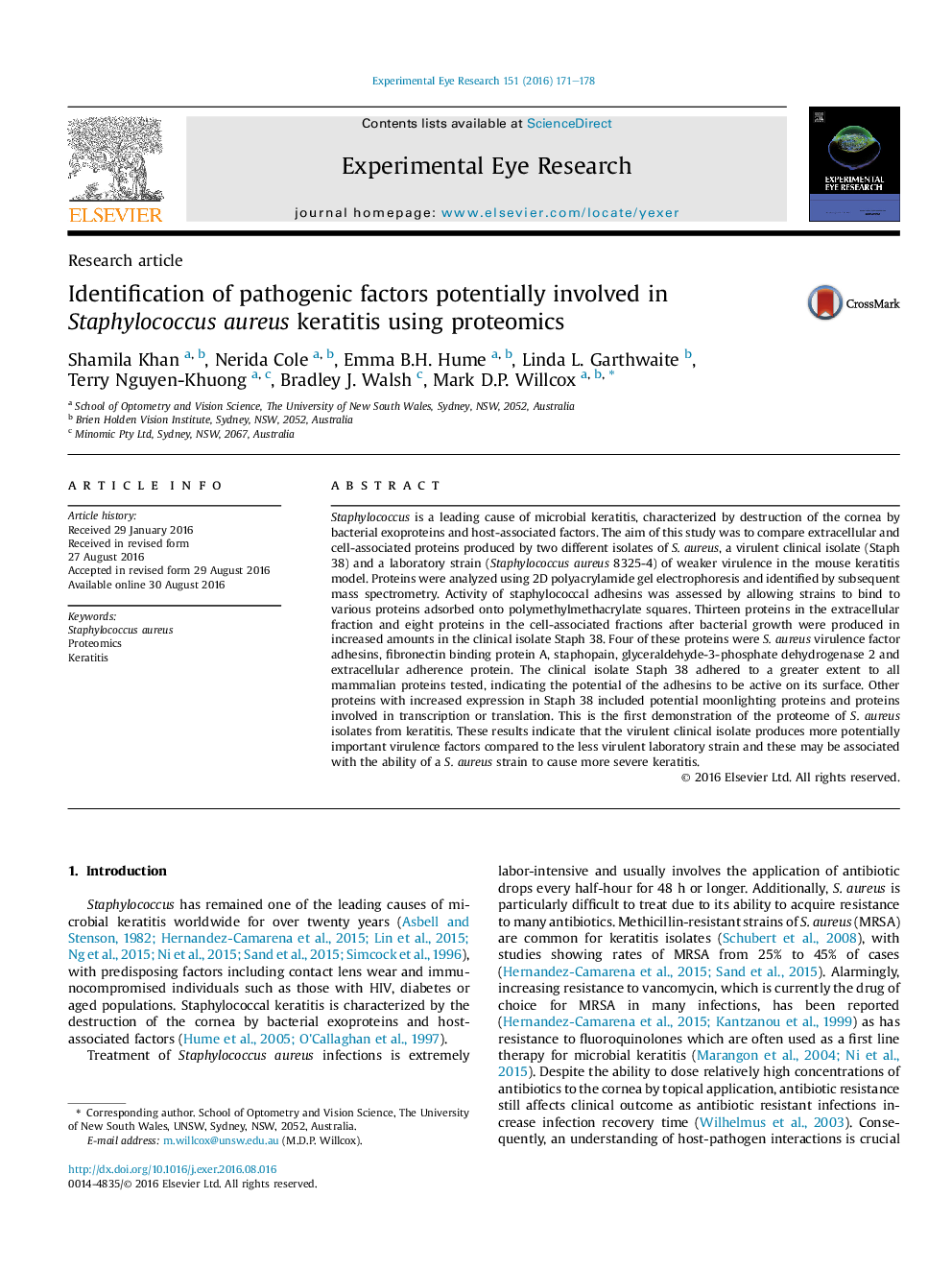| Article ID | Journal | Published Year | Pages | File Type |
|---|---|---|---|---|
| 6196194 | Experimental Eye Research | 2016 | 8 Pages |
â¢The cell-associated or extracellular proteomes of two strains of S. aureus were compared.â¢The virulent strain produced more potential virulence factors in both proteomes, including fibronecin-binding protein.â¢The virulent strain was able to bind to ligands of these adhesins in greater numbers than the less virulent strain.â¢The differences in proteomes of strains of S. aureus correlate to different degrees of virulence in corneal infections.
Staphylococcus is a leading cause of microbial keratitis, characterized by destruction of the cornea by bacterial exoproteins and host-associated factors. The aim of this study was to compare extracellular and cell-associated proteins produced by two different isolates of S. aureus, a virulent clinical isolate (Staph 38) and a laboratory strain (Staphylococcus aureus 8325-4) of weaker virulence in the mouse keratitis model. Proteins were analyzed using 2D polyacrylamide gel electrophoresis and identified by subsequent mass spectrometry. Activity of staphylococcal adhesins was assessed by allowing strains to bind to various proteins adsorbed onto polymethylmethacrylate squares. Thirteen proteins in the extracellular fraction and eight proteins in the cell-associated fractions after bacterial growth were produced in increased amounts in the clinical isolate Staph 38. Four of these proteins were S. aureus virulence factor adhesins, fibronectin binding protein A, staphopain, glyceraldehyde-3-phosphate dehydrogenase 2 and extracellular adherence protein. The clinical isolate Staph 38 adhered to a greater extent to all mammalian proteins tested, indicating the potential of the adhesins to be active on its surface. Other proteins with increased expression in Staph 38 included potential moonlighting proteins and proteins involved in transcription or translation. This is the first demonstration of the proteome of S. aureus isolates from keratitis. These results indicate that the virulent clinical isolate produces more potentially important virulence factors compared to the less virulent laboratory strain and these may be associated with the ability of a S. aureus strain to cause more severe keratitis.
